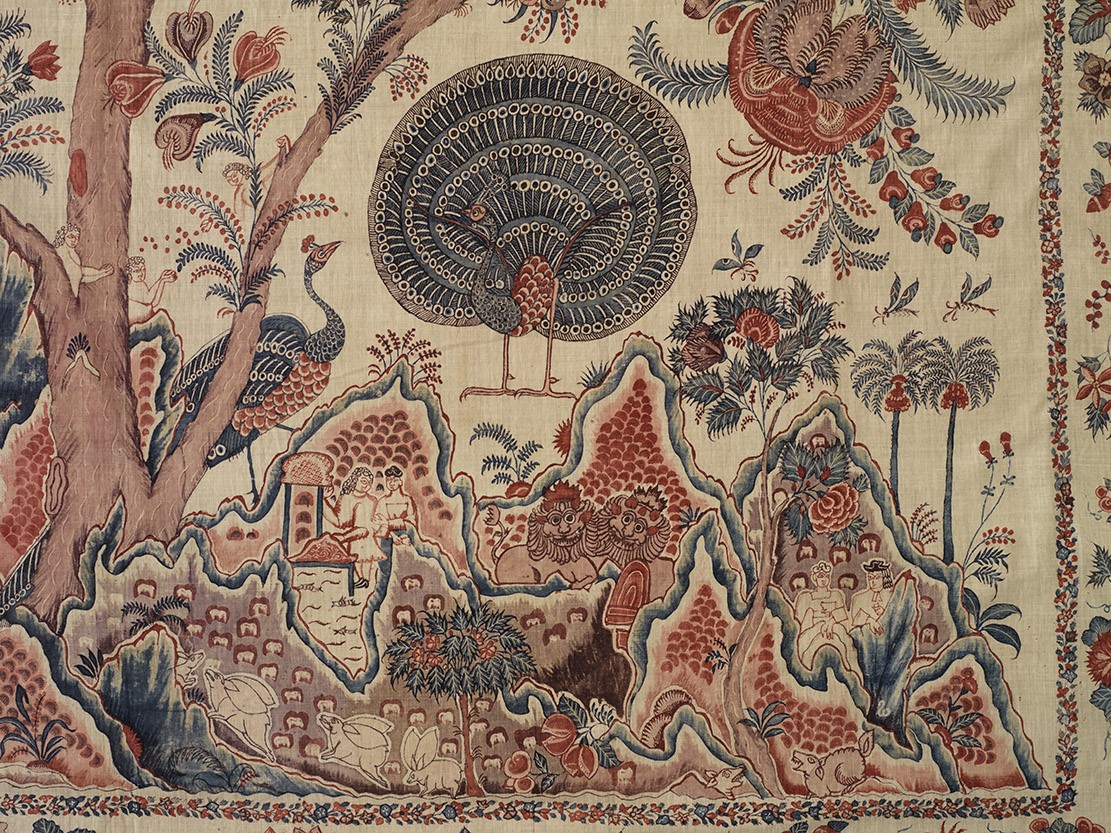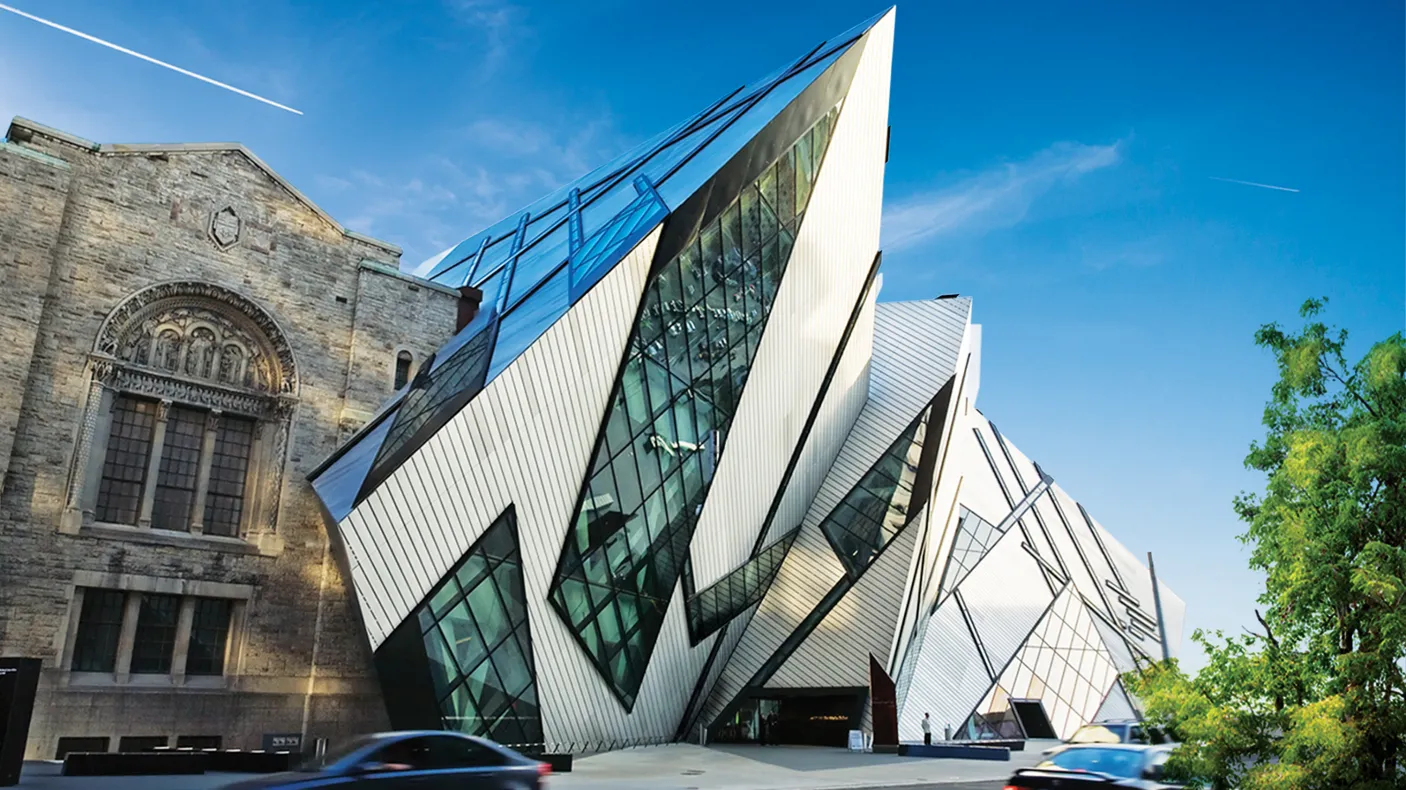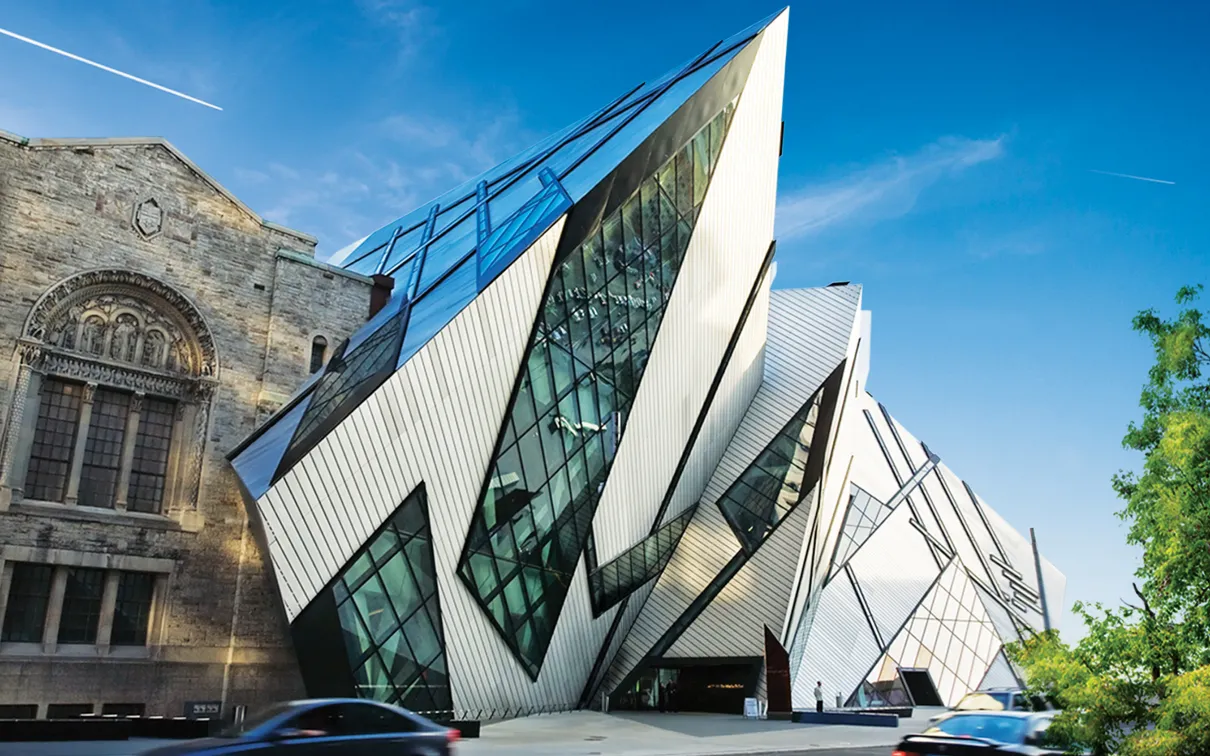The ROM Explores India’s Most Influential Textile in The Cloth that Changed the World: India’s Painted and Printed Cottons
Published
Category
Press Release

Figure 1: Wall or bed hanging (palampore). Made in coastal southeast India for the European market. Mordant-dyed and resist-dyed cotton tabby with gold leaf, first half of the 18th century, 365.6 × 256.4 cm. ROM 934.4.13. Harry Wearne Collection. Gift of Mrs. Harry Wearne
TORONTO, March 3, 2020 — On April 4, the Royal Ontario Museum (ROM)'s world-renowned collection of Indian chintz will be brought to life in a spectacular exhibition revealing it to the public for the first time in 50 years. The Cloth that Changed the World: India's Painted and Printed Cottons celebrates the technical mastery, creativity, and far-reaching influence this vividly painted and printed cloth has had on the world, from its origins 2,000 years ago to the present day. On display from April 4 to September 27, 2020, this extraordinary ROM-original exhibition presents 20 recognized masterworks alongside 10 new acquisitions and rare loans from prestigious international collections.
“As a leading centre for scholarship and expertise in South Asian fashion and textiles, we are delighted to give visitors a critical lens through which to understand the enduring global influence of this extraordinary textile,” says Josh Basseches, ROM Director & CEO. “Drawing from the ROM’s collection, which ranks as one of the best in the world, this visually rich exhibition will delight the eye and open the mind."
On view in the Patricia Harris Gallery of Textiles, The Cloth that Changed the World: India's Painted and Printed Cottons presents the splendour of Indian chintz from the 13th century to today. It also explores the consequences of global consumer desire for the textile, from its role in intensifying the Industrial Revolution and the trans-Atlantic slave trade to present-day environmental concerns. Visitors will discover how through trade routes, encounters, and exchange, this highly coveted cloth connected cultures and quite literally changed the world. With a focus on attire and home furnishings, the exhibition features 80 objects spanning 10 centuries and four continents. Religious and court banners from India, gilded wall hangings for elite homes in Europe and Thailand, and luxury English women’s dress demonstrate the tremendous craftsmanship and global desire for Indian chintz.
To celebrate the multidisciplinary teamwork that guided the exhibition and its companion publication, the ROM is hosting a prestigious one-day symposium titled Always in Fashion: India’s Painted and Printed Cottons. On Friday, April 24, the ROM brings together internationally renowned scholars, makers and designers including keynote speaker Dr. Dominique Cardon, a world authority on natural dyes and their revival. To learn more and purchase tickets, please visit: https://www.rom.on.ca/en/whats-on/always-in-fashion-indias-painted-and-printed-cottons
“Please join us in Toronto on April 24th for this rare gathering of international researchers, artists and designers who are investigating India’s rich textile heritage and rejuvenating past practices for new generations,” says Sarah Fee, ROM Senior Curator of Eastern Hemisphere Fashion and Textiles.
The Cloth that Changed the World is included with Museum admission. ROM Members can enjoy an exclusive preview of The Cloth that Changed the World: India's Painted and Printed Cottons on April 3, 2020. For more information on ROM Memberships visit www.rom.on.ca/members or call 416.586.5700.
-30-
Media Contact
Anne Vranic, Senior Publicist
416.586.5514
avranic@rom.on.ca
Social Media
#ROMChintz
Like: ROM Facebook
Tweet: @ROMToronto
Instagram: romtoronto
Watch: ROM YouTube
Blog: ROMblog
About the ROM
Founded in 1914, the Royal Ontario Museum showcases art, culture, and nature from around the world and across the ages. Among the top 10 cultural institutions in North America, Canada’s largest and most comprehensive museum is home to a world-class collection of 13 million artworks, cultural objects, and natural history specimens, featured in 40 gallery and exhibition spaces. As the country’s preeminent field research institute and an international leader in new discoveries, the ROM plays a vital role in advancing our understanding of the artistic, cultural, and natural world. Combining its original heritage architecture with the contemporary Daniel Libeskind-designed Michael Lee-Chin Crystal, the ROM serves as a national landmark, and a dynamic cultural destination in the heart of Toronto for all to enjoy.


